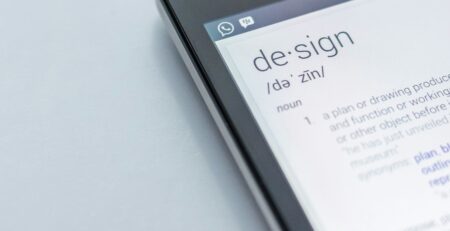Sustainable Design Thinking: Creative Approaches for Going Green
Users and customers are more concerned with their environmental impact than ever before. Design thinking breeds innovation and an increased production right alongside it. If the theory behind the design doesn’t account for ecological concerns and sustainable business practices, the user, environment, and bottom line all suffer.
As a highly adaptive framework, design thinking is more than capable of addressing this problem. It is expanding beyond creative teams and including management and stakeholders, which means it can have a significant impact on business more broadly.
In this guide, we’ll be talking about the current state of design thinking and how business teams and creatives can realign their projects toward environmental sustainability and long-term planning. Doing so will not only make products more appealing to the consumer but also ensure the company and brand will survive and thrive well into the future.
Environmental Concern is Growing
Studies and surveys that seek to measure people’s awareness of and concern for the environment have been conducted by researchers since at least the 1970s. Growing information about important issues like pollution, deforestation, climate change, animal extinction, and access to clean drinking water has created a more informed and concerned consumer generally.
That’s not to say that every single person shares the same concern for the environment. However, even those who prioritize convenience or low cost above ecological concerns aren’t usually discouraged by green design provided it doesn’t affect the cost of the final product.
Research shows that the majority of Americans believe that protecting the environment is as important as a strong economy. But the way these people think about and define the environment differs widely.
For example, our immediate surroundings are likely to be part of what we consider to be nature. Even in urban areas, litter and pollution are viewed negatively. However, for places that are further away, the destruction of the environment may feel more abstract and distant and therefore be of less concern.
By no means should we take that to mean product design and creative teams don’t need to consider faraway places. A holistic view of the global environment as well as the local one addresses ecological concerns better and makes products more appealing in a much larger market.

Common Areas of Ecological Worry
Accounting for a brand’s environmental impact can give you the edge over competitors who are found to be causing pollution or negatively impacting the place where they source, manufacture, or sell their products. Here are a few specific environmental concerns designers should consider in the course of their design:
- Access to Clean Resources
Preventing access to clean water or a particular resource frequently creates just as bad of an impression as polluting that water or resource beyond use. Many companies are guilty of this, including in places like California where water rights are a big issue.
Although the biggest concern for some markets will be concentrated on local resources, blocking off access to resources is a horrible move for branding and PR. From a design standpoint, transparency regarding the company’s business practices is one of the best strategies for eliminating this outcome.
- Pollution
Customers often worry about the impact of sourcing raw materials, production, and disposal of a product after it has been used. Many designers and creatives concentrate solely on using recycled or sustainable materials in their products.
While that is admirable and a good strategy for the latter stage of a product’s life cycle, addressing the sourcing and production should also be considered. Users also want to be sure that the use of the product will not harm them. Think of the huge market for bottled water and filter systems as an example.
- Climate Change
The term climate change has built up a political connotation for the majority of people. Whatever individual opinions might be, there is no doubt that weather changes are happening all over the world.
All of the negative possibilities as a result of climate change present an opportunity for corporate responsibility and charity, both stellar factors in positive branding and public relations.
The Common Concern of Humankind
Organizations like the United Nations refer to environmental protection as the common concern of humankind. Taking this sort of stance is advisable to businesses as well, especially in tandem with competitors. Although healthy competition is normal, the public presentation of common efforts gives the image of companies who care about more than just profits.
Messaging around ecological concern and accountability is incredibly important in sustainable design thinking. Ecological product design is great and all, but if it isn’t apparent to the user or the larger public then you’re missing out on positive advertisement.
What Does Green Design Thinking Look Like?
The first stage in design thinking is empathizing. Normally this would apply to user concerns in areas like functionality, usability, and problem-solving. But it’s now becoming vital for designers to empathize with the plight of people who are damaging the environment and the likely consequences.
To some extent, this should be easy if you approach environmental protection as the common concern of humankind. Designers are also human, after all.
But design thinking can become dangerous if the convenience of the user is taken too far. The user might want to sacrifice everything for individual comfort, but that’s a recipe for environmental disaster.
Green design thinking must prioritize sustainability as a counter-balance to the users’ desires. Attenuating the worst of our consumer impulses is the only way to prevent hugely negative environmental impacts in all areas of concern.
Here are some elements to account for in your design thinking to make it more ecologically friendly over the long term:
1. Defuturing
A term coined by the design theorist Tony Fry, defuturing refers to certain design practices that limit the possibilities of the future and drive overconsumption. Planned obsolescence, or building a limited lifespan into a product to force users to purchase a newer model at a later date, is a perfect example of a defuturing action.
Updates to technology that aren’t reverse-compatible also create needless waste and over-production. If you can’t reasonably implement innovations into your existing product line, then you shouldn’t roll out the product.
2. Reusability
If your product works well, the user will want to keep using it. So if you make an effective product that the customer can use over and over again, they’re usually happy to pay a higher price for the original product.
With today’s many subscription-led platforms, the idea of using something repeatedly without paying per use has largely fallen out of favor. But don’t discount the huge appeal your product will have to prospective users if they know they can rely on it for a long time without having to make another investment. It also saves on manufacturing costs.
3. Disposal
Reducing the number of times people have to take out the trash will add another dimension of utility to your product. If it isn’t a physical product, you can still reduce its impact on waste at physical contact points. A food delivery app, for example, might highlight that they partner with restaurants to use only the bare minimum of materials in their packaging and rely on recycled materials.
Make sure all transactions and records can be done without using paper. For digital technology, many users aren’t sure how disposal should work. Computers that may have reusable components may wind up in the landfill simply because people don’t know where to take them.
Build a recycling policy into your brand whenever possible. Accept old products and find a way to reuse materials and safely dispose of what can’t be reused. Customers will like that the company doesn’t simply abandon them after the purchase has been made.
4. Forward Thinking
Accounting for users’ future needs as well as the ones they currently experience is already a feature common to design thinking. But that accounting should go beyond just matters of convenience and pain points.
Green design thinking incorporates future ecological needs and concerns into the final product. It isn’t all about reducing carbon footprints and increasing reusability. The product itself ought to be able to help address problems that arise from the changing environment wherever possible.
No one can tell the future absolutely, but there are some things we can reasonably infer. For instance, digital platforms are on the rise, which indicates the trend away from physical information. It also likely means that more rare earth materials will be used and need to be recycled and disposed of, which should be of great concern for designers thinking ecologically.
5. Social Responsibility
The idea that companies have a duty to the general public is closely related to the idea that they also have a responsibility to help preserve the environment. In addition to helping frame the course toward ecological product design, it also gives businesses a stronger appeal toward potential and returning customers.
Designers account for social responsibility in both marketing and product design. Transparency and authenticity go a long way in this pursuit. Take novel approaches and reach out to local charities and NGOs to help demonstrate the company’s commitment to corporate social responsibility and make sure the final products align completely with this branding.
How to Implement Green Design Thinking
To understand how designs and particular products impact the environment, research must be done. That starts with asking the right questions from the earliest stages of the design process. You may know how to find out what people want or need, knowingly or otherwise, but it also has to include environmental issues inherently.
The research might lead all over the world depending on the specific supply chain for a given product. End-users may also be anywhere or even in a multitude of places. Research, questions, and ecological strategy also need to address costs, although that is likely a given for designers in the business world.
One key thing to remember is that green design thinking cannot be accomplished through messaging alone. Doing the best research, asking the right questions, and accounting for cost are essential and should be advertised transparently to potential customers, but the product itself must be the central engine in reducing environmental impact and even repairing the environment where possible.
Getting stakeholders involved in the green aspects of the design may be a challenge. Encourage the inclusion of environmental protection in the company’s branding and mission statement. From a strictly business perspective, products with smaller carbon footprints are more appealing to customers and more than likely better for the bottom line.
Corporate Sustainability and Green Design Thinking
Corporate sustainability ideally blends with accountability and social responsibility to create stakeholders that are more valuable to the user. It may be a bit confusing for those who have not considered the perception of stakeholders for users or the wider public, but it’s essential for branding nonetheless.
Approach corporate sustainability not only in terms of the environmental impact of the product line but also through the future outlook of the business itself. Growth is nearly always a central goal, but that growth has to be sustainable. Otherwise, you’re burning the candle at both ends simply to maximize profit and jump ship when it stops being useful.
For a public that is becoming increasingly concerned with the environmental impact of the products it uses, blind short-term thinning for profit maximization is the worst possible strategy. Green design thinking doesn’t have to completely abandon the profit motive, but it must temper that drive with sustainability.
Abandoning Neutral Ethics for Sustainable Design Thinking
Most companies tiptoe around ethics. In today’s more ecologically concerned world, taking a weak stance on the environment can be as bad as neglecting the environment completely. Ecological product design aims to highlight the environmental impact of the brand throughout the product life cycle as a feature, not an additional consideration.
Designers should also be taking an ethical stance against waste, pollution, and overconsumption as a feature of their design thinking, not simply an additional hurdle to building the perfect product.
Equivocating about environmental impacts or strategies to reduce pollution and the negative health impacts that result will damage the brand and tarnish corporate sustainability. Brands, designers, and stakeholders should pride themselves on building products that leave a minimal carbon footprint while still addressing customer desires, solving problems, and making as much of a profit as possible.
Implementing sustainable design thinking requires a paradigm shift for stakeholders, designers, and users. Products should ideally break new ground when it comes to explicitly identifying how we think about the natural world and interact with it. Designers have a huge impact on this shift via ecological product design.
Ecological Product Design: The Holistic Approach
Research toward green initiatives must not only take a long view of what’s happening outside the company and how products can address these occurrences. It should also include business practices with the company and seek to create environmentally-friendly methods for internal procedures.
Other smart business practices like broader teamwork and user involvement in planning and implementation serve ecological product design well. Whether it’s a physical product for sale or a strategy for improving the overall corporate culture, working together and taking risks are both likely to lead to better results.
That means designers, stakeholders, and management need to take a look at the entire organization and how it works, from the structuring of the company hierarchy to the way the creative team approaches projects and marketing campaigns.
Envisioning the company and its relationship with users will help strengthen business practices generally and better situate the company to address environmental concerns. Ideally, it will lead to lower costs, stronger customer engagement, and a stronger business overall.

Conclusion:
Green design thinking is for more than just branding and messaging purposes. It aims to reduce companies’ carbon footprint and include users’ current and future environmental concerns as a feature of the design process. Accounting for ecological concerns leads to better corporate sustainability and helps ensure that the company can continue its growth well into the future.
Use the tips and considerations in this guide to make your design approach better for the environment and life on earth. Users will have a better experience, the product will have greater desirability, corporate culture will improve, and the stakeholders will be viewed much more favorably when ecological concerns are included in the design thinking process from its earliest stages.












